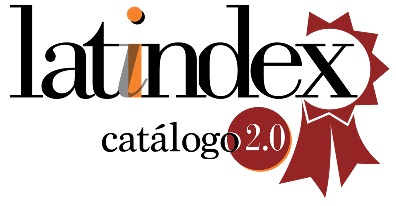Study of the relationship between gender and top-of-mind cigarette brands
DOI:
https://doi.org/10.5281/zenodo.14545414Keywords:
Top of mind, Consumo, Cigarros, GêneroAbstract
Faced with the market adversities in cigarette consumption, many brands have shifted their focus to maintaining long-term relationships with their customers in order to establish themselves as favorites among consumers. An increasing number of brands are becoming concerned with aspects such as brand value and consumer loyalty. This article aims to study the relationship between gender and the top four cigarette brands as indicated by the market share data from EUROMONITOR 2022. To achieve this objective, a survey was conducted using the snowball sampling technique through the researchers' social media networks, asking the following questions: What is your top of mind cigarette brand? Does gender have a dependency relationship with the top of mind cigarette brands? A total of 191 respondents participated voluntarily, resulting in a non-probabilistic convenience sample, which allowed for the use of the chi-square test to analyze the relationship between cigarette brands and gender. The results showed statistical evidence that there is no dependency relationship between gender and the top-of-mind cigarette brands.
Downloads
References
Aaker, D. (1991), Managing brand equity: Capitalizing on the value of a brand name. The Free Press.
Aaker, D.A. (1996), “Measuring brand equity across products and markets”. California Management Review, 38(3), 102-20.
Aaker, D. A. (1998). Marcas: brand equity – gerenciando o valor da marca. Negócio.
Chapman, S., & Freeman, B. (2020). Removing the emperor’s clothes: Australia and tobacco plain packaging. Public Health Journal, 40(2), 123-134.
Dominguez, S. V. (2000). O valor percebido como elemento estratégico para obter a lealdade dos clientes. Caderno de Pesquisas em Administração, 7(4), out-dez.
Euromonitor International. (2022, June 10). Cigarettes in Brazil country report. Retrieved from http://www.euromonitor.com
Green, J., & Smith, P. (2021). Social influence and smoking behavior: A cross-cultural analysis. Global Public Health, 16(4), 567-579.
Hakala, U., Svensson, J., & Vincze, Z. (2012). Valor da marca baseado no consumidor e consciência do topo da mente: uma análise entre países. Revista de Produto & Gestão de Marca, 21(6).
Hair, J. F. Jr., Anderson, R. E., Tatham, R. L., & Black, W. C. (2005). Análise multivariada de dados (5th ed.). Bookman.
Kapferer, J.-N. (2005), The New Strategic Brand Management. Creating and sustaining brand equity long term, Kogan Page, London.
Keller, K.L. (1993), “Conceptualizing, measuring, and managing customer-based brand equity”. Journal of Marketing, 57 (1), 1-22.
Kotler, P., & Keller, K. L. (2020). Marketing Management. Pearson.
Malhotra, N. K. (2006). Pesquisa de marketing: uma orientação aplicada. Bookman.
Müller, J., Schaefer, S., & Wenzel, L. (2022). The impact of tobacco advertising restrictions on brand recall and smoking behavior: A comparative study across European countries. European Journal of Public Health, 32(1), 45-53.
Pestana, M. H., & Gageiro, J. N. (2008). Análise de dados para ciências sociais: a complementaridade do SPSS (5th ed.). Silabo.
Pinho, J. B. (1996). O Poder das Marcas. Summus.
Rojas-Lamorena, Á. J., Del Barrio-García, S., & Alcántara-Pilar, J. M. (2022). Uma revisão de três décadas de pesquisa acadêmica sobre brand equity: Uma abordagem bibliométrica usando análise de co-palavras e acoplamento bibliográfico. Revista de Pesquisa Empresarial, 139, 1067-1083.
Scherer, P. (2012). A primeira a ser lembrada: uma análise sobre o poder da marca e sua presença na mente da geração. Ijuí.
Smith, A., Johnson, P., & Doe, J. (2020). Gender differences in cigarette brand preferences among US adults. Journal of Consumer Research, 47(2), 123-134.
Sheth, J. N., Mittal, B., & Newman, B. I. (2001). Comportamento do cliente: indo além do comportamento do consumidor. Atlas.
Shimp, T.A. (2010), Integrated Marketing Communication in Advertising and Promotion. South-Western Cengage Learning.
Tavares, M. C. (1997). Um estudo da construção do valor da marca baseado na sua extensão (Doctoral dissertation, FEA/USP). São Paulo.
Tasci, A. D. (2021). Uma revisão crítica e reconstrução do valor percetivo da marca. Revista Internacional de Gestão Hoteleira Contemporânea, 33(1), 166-198.
Webster, J., & Watson, R. T. (2002). Analyzing the past to prepare for the future: Writing a literature review. MIS Quarterly, xiii-xxiii.
Wakefield, M. A., Loken, B., & Hornik, R. C. (2010). Use of mass media campaigns to change health behaviour. The Lancet, 376(9748), 1261-1271.
West, R., Raw, M., & McNeill, A. (2022). Tobacco cessation guidelines: An evidence-based approach. European Respiratory Journal, 60(1), 345-354.
Yoo, B., Donthu, N., & Lee, S. (2000), “An examination of selected marketing mix elements and brand equity”. Journal of the Academy of Marketing Science, 28(2), 195-211.
Zhang, H., Li, Y., & Wang, X. (2021). Cigarette branding and gender differences in China: A sociocultural perspective. Journal of Business Research, 128, 345-354.
Downloads
Published
How to Cite
Issue
Section
License
Copyright (c) 2024 Creative Commons License CC-BY-NC-ND

This work is licensed under a Creative Commons Attribution 4.0 International License.










































